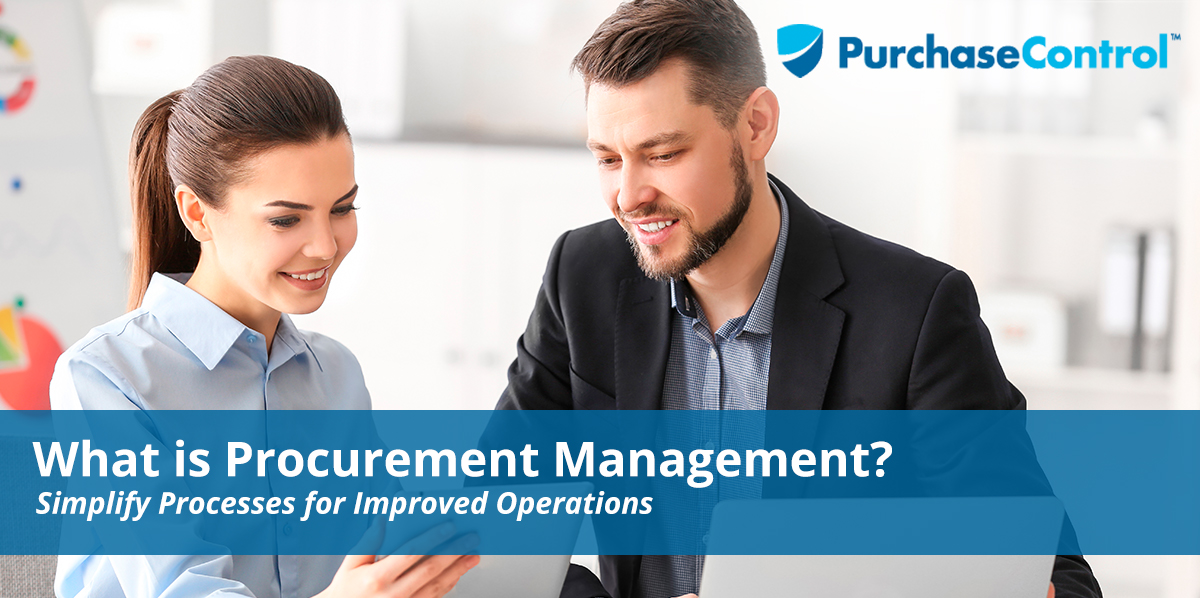What is Procurement Management?
Many organizations don’t have efficient procurement management processes in place. Often, this is a result of relying on manual, paper-based processes rather than embracing digital solutions that offer automation.
Manual procurement management plans are riddled with high processing costs, lost documents, slow approval cycles, missed discount opportunities, and uncontrolled costs. As a result of the chaos, supplier relationships suffer because of inefficient dispute resolutions, poor vendor management, late payments, and more.
“Procurement management is a strategic approach to optimizing organizational spend. It invoices sourcing, requisitioning, ordering, inspection, and reconciliation. It means acquiring your goods and services from preferred vendors, within your determined budget, either on or before the deadline.”
Why You Should Automate Procurement Management
Your company’s procure-to-pay process is the most time-consuming and labor-intensive function, even when you take time to plan procurement. Manually handling everything leads to a massive amount of paper to keep up with and leaves plenty of room for error in numerous places throughout the cycle. Moving toward automation is one of the best decisions you can make for the long-term health of the business.
Procurement automation offers a wide range of benefits, including:
- Reduced processing cost and time
- Fewer exceptions
- Improved compliance
- Enhanced spend visibility
- Improved spend management
- Increased productivity in the purchasing department to allow for more time spent on negotiating better procurement contracts with potential suppliers at the lowest prices.
- Better overall supply chain management
Functions of Procurement Management That Should be Automated
There are several functions within procurement, but these are the most important to automate. Removing the manual aspect of these five functions will save money and time, while improving productivity.
Purchase Requisition
Purchase requisitions (PRs) should be in place so that all staff members create a record of their requested items, from a list of approved vendors, instead of making purchases from wherever they want, whenever they want. With procurement management software, department heads can allocate budgets and set user permissions so that only the people with the correct authority can approve purchase requisitions and convert them to purchase orders.
With the software, a team member can create a PR in the system, dictating what they need, where they want to order it from, and when they need it delivered. Automatic routing will immediately send the requisition to the necessary team member for approval. Once approved, it will automatically convert to a purchase order to be delivered to the vendor. If denied, the approver can note why the requisition was denied and allow the requestor to make necessary edits to get it approved.
Creating a consistent requisitioning experience ensures there is no maverick spend within the organization.
Purchase Order
Using an electronic system eliminates the need for manual paper-based purchase orders (POs) or time spent on data entry. Approved PRs become as many POs as necessary, depending on the number of line items and vendors.
Because the software provides complete transparency into the process, anyone with the appropriate permissions can easily locate a PO in the approval chain at a certain point in time. Audit trails ensure accountability because they note the date, time, and person who took action on the order. This speeds up PO processing considerably.
Invoice Approval
Invoice approval and processing is one of the main areas of the procurement process that can become much more efficient with the use of procurement automation. When a vendor submits an invoice, the procurement management solution processes the paper invoice to digitize it and check it against any available information, such as the supplier name, PO limit, and contract payouts.
In the event there are discrepancies, the approval system prevents the invoice form being paid, and decides what to do based on predefined rules. When everything is in order, the system automatically forwards the invoice to the accounts payable department where it is approved for final payout.
Vendor Management
The vendor selection process is generally manual, repetitive, and time-consuming. Procurement management systems can automate many of the tasks such as background checks, supplier request for quote (RFQ) review, and follow up in the case of missing documents or information.
Automating this portion of procurement enhances supplier collaboration by handling all the steps of vendor onboarding in record time with improved accuracy compared to handling everything manually. Procurement management software can assist with due diligence across processing, reviewing, and scoring vendors much faster than manual processes.
Contract Management
It takes a long time to handle manual contract approvals. Contract management involves collecting and managing contracts across the organization and storing them securely. In a procurement management system, you can attach contracts and vendor files to the vendor in the system, so they are easily accessible for compliance checks.
Removing the Chaos from Your Procurement Management
Though your business can get a lot of value from identifying the reason behind procurement management and regulating it, it’s easy to keep pushing it further down the priority list because you just don’t know where to start.
Here are five areas to digitize to improve procurement process efficiency.
Approval Workflows
POs, PRs, and invoices that need approval are automatically routed digitally, based on the pre-defined set of rules you apply during initial setup. These rules can be edited and added to on an as-needed basis, at any time. However, building rules that are flexible enough to handle enough various workflow patterns, based on elements such as organizational structure, vacations, total value, and more.
Three-Way Matching
When the system receives an invoice, the automated process should check for duplicate entries, identify related documents (POs, order receipts, etc.) and validate data. Data needs to be validated against business policies and rules to ensure compliance. The system should match the PO to the receipt of goods, and to the invoice, to ensure that only the items ordered and received are paid for. Any exceptions should automatically forward to the appropriate stakeholders for inspection and resolution.
Notifications
The automated procure-to-pay process should eliminate potential bottlenecks in the procurement process by sending notifications based on tasks or vents. Alerts need to be configured in such a way that move tasks along the flow from onset to completion without needing manual follow up.
Integration
Your procurement management system should aggregate with other systems, such as your accounting platform, your contract management system, business process management tools and more. These integrations eliminate the need to re-enter data into multiple systems to update the information manually.
Storage
Storing vendor information, contracts, and other purchasing documents digitally saves space and eliminates the need to maintain a physical document repository. Maintaining the system online with digital workflows allows quick and easy access to the full processing history of all documents with audit trails.
To prevent the loss of effort, time, and money that happens with manual procurement processes, organizations need to invest in digital automation platforms to gain control and visibility. Investing in an automation platform enables businesses to streamline, track every step, and accelerate each part of the procure-to-pay process from end-to-end.
Procurement management with tools such as PurchaseControl not only helps improve process efficiency but also build and maintain stronger vendor relationships. PurchaseControl provides organizations the flexibility to develop a system that works with their existing processes and supports growth potential.
PurchaseControl uses a combination of automated workflows, effortless reporting, and integrations to automate the procurement management processes, giving you substantial financial and operational benefits.
When your company decides to invest in technology to streamline the procurement process through automation, it should be assigned to a project manager who will handle everything related to the overall project. This ensures everything runs as smoothly as possible during transitioning to the new system.
PurchaseControl makes your procurement management process much simpler with various automation options.
Find Out How








